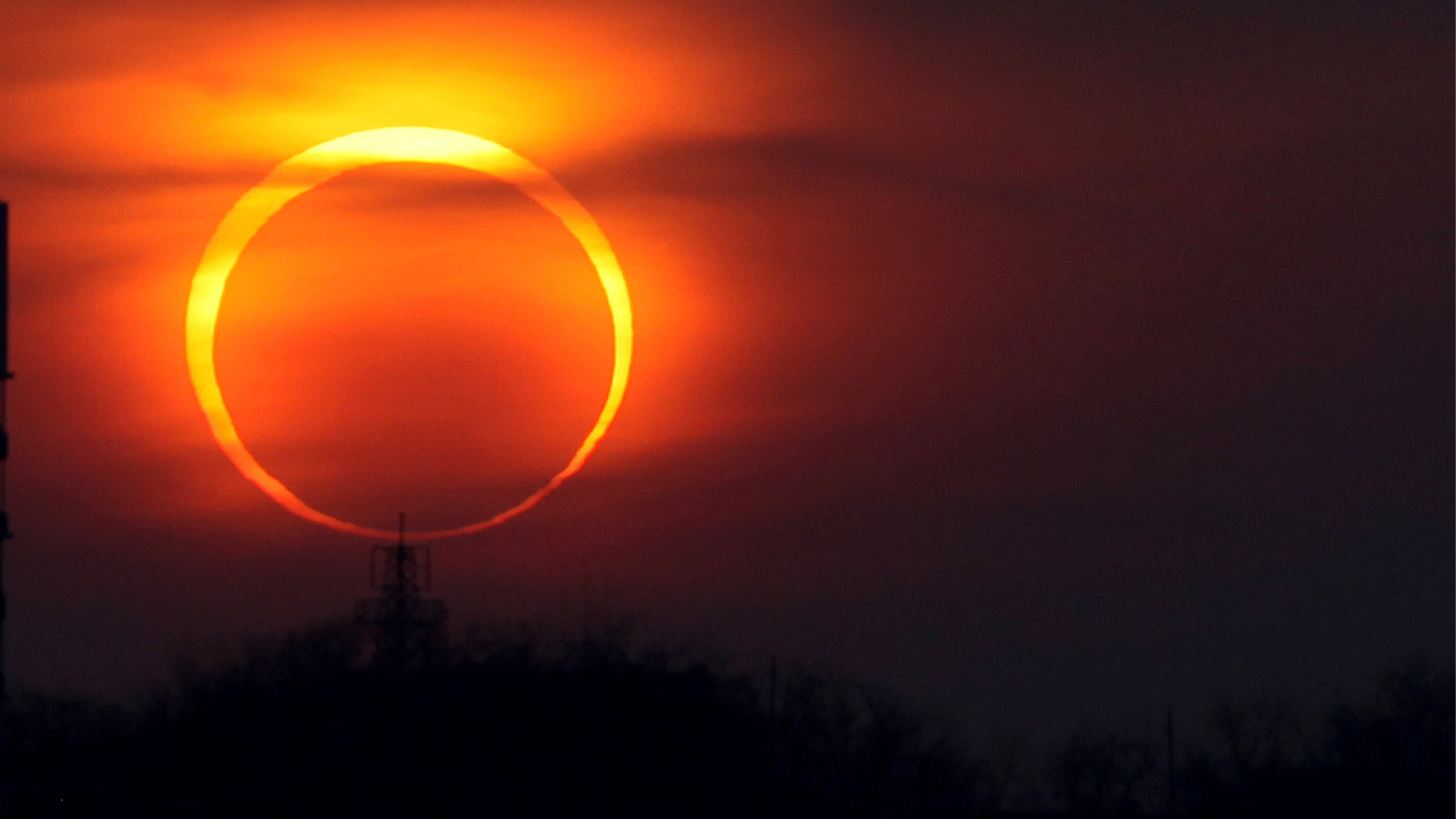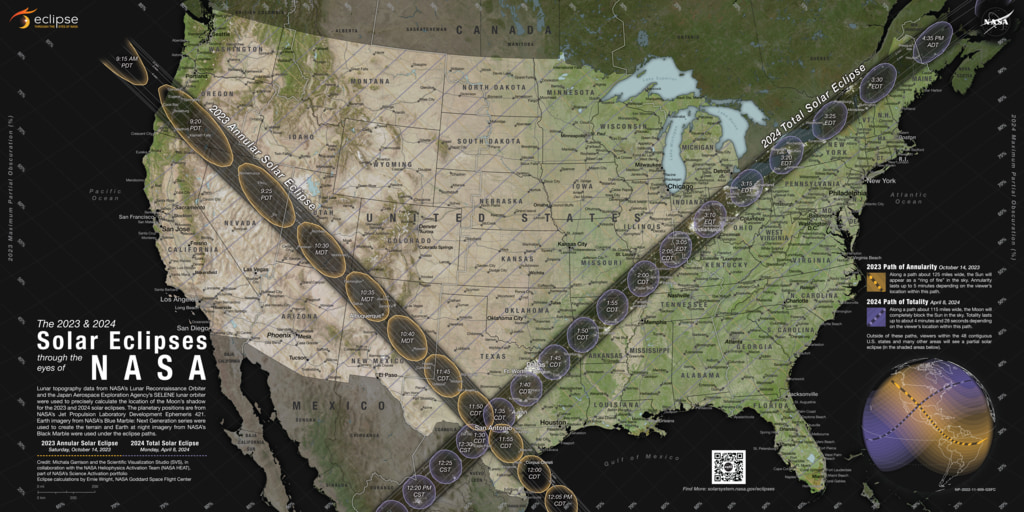Exactly where and when to see the 'ring of fire' solar eclipse this weekend
A partial solar eclipse will be visible across most of the Americas on Oct. 14, with a rare 'ring of fire' annular eclipse visible in nine states.

A partial solar eclipse will be visible across most of the Americas on Saturday, Oct. 14, when the moon will block up to 90% of the sun, depending on the viewer's location. For some, the view will include a rare "ring of fire" annular solar eclipse.
It will be the first solar eclipse visible in North America since June 10, 2021, when a "ring of fire" was visible in Canada and a huge partial solar eclipse was seen in the U.S. Northeast.
Only Alaska and the southern tip of South America will miss out on seeing some kind of partial solar eclipse, though exactly how much of the sun is obscured by the moon depends on a location's proximity to a 125-mile-wide (200 kilometers) path.
Viewers inside that path will see an annular solar eclipse, during which a halo of sunlight will be visible around the new moon. The path will travel partially or entirely through southern Oregon, northeastern California, northern Nevada, southwestern Idaho, Utah, southwestern Colorado, northeastern Arizona, New Mexico and Texas. The "ring of fire" will also be seen in parts of Mexico, Belize, Honduras, Nicaragua, Panama, Colombia and Brazil.
"Over 6 and a half million people live in this path of annularity, and there's another 68 million people who live within 200 miles [320 km] of the path," Alex Lockwood, strategic content and integration lead for NASA's Science Mission Directorate, said at a NASA news conference on Sept. 26. "But everyone in the entire contiguous United States can witness a partial solar eclipse."
Related: Where to buy solar eclipse glasses before the Oct. 14 'ring of fire' eclipse

This month's event will be the first annular solar eclipse to cross the U.S. since May 20, 2012, according to timeanddate.com, where you can see a schedule of eclipse viewing times for any location.
Sign up for the Live Science daily newsletter now
Get the world’s most fascinating discoveries delivered straight to your inbox.
At no point will the sun be completely blocked by the moon, so all viewers must use safe solar viewing glasses throughout the entire event, according to NASA.
"We're encouraging folks to go out there and observe safely, making sure that you have ISO[International Organization for Standardization]-certified glasses," said Kelly Korreck, eclipse program manager at NASA headquarters.
The American Astronomical Society keeps a list of suppliers of safe solar filters and viewers that comply with the ISO 12312-2 safety standard — and many of them still have supplies in stock for the weekend’s event.
If you can't find a pair of eclipse glasses in time, other safe ways of viewing the eclipse indirectly include making your own pinhole eclipse viewer out of household materials (you can follow this simple step-by-step guide), casting the eclipse's shadow through the holes of a kitchen colander, or reflecting the sun's light off of a disco ball onto a nearby wall or floor.
If you can't make it outside at all, NASA will broadcast the eclipse live online from 11:30 a.m. through 1:15 p.m. EDT from both Albuquerque, New Mexico, and Kerrville, Texas.
Although some kind of partial solar eclipse occurs on Earth once every six months, the moon's position and distance determine what kind. On Oct. 14, the new moon will be close to apogee, its farthest point from Earth during its slightly elliptical monthly orbit.

Jamie Carter is a freelance journalist and regular Live Science contributor based in Cardiff, U.K. He is the author of A Stargazing Program For Beginners and lectures on astronomy and the natural world. Jamie regularly writes for Space.com, TechRadar.com, Forbes Science, BBC Wildlife magazine and Scientific American, and many others. He edits WhenIsTheNextEclipse.com.









